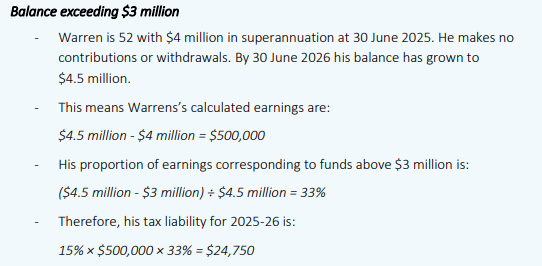What you need to know about the new proposed tax on superannuation earnings
Superannuation has traditionally been a tax efficient means of investing for your retirement – and for good reason. Supporting citizens in funding their own retirement reduces the pressure on our tax system. Given our ageing population and concerns over sufficient numbers of tax-payers to support paying pensions, this is essential.
There’s no question retirement and superannuation is a sensitive issue, which is why industry bodies like the SMSF Association are concerned about new proposed super tax reform legislation.
The Treasury Laws Amendment (Better Targeted Superannuation Concessions) Bill 2023 and the Superannuation (Better Targeted Superannuation Concessions) Imposition Bill 2023 are currently in consultation. You can read the full drafts here. The consultation period closes on 18 October 2023.
Here’s what it proposes
From July 2025, the tax rate on earnings in superannuation balances over $3 million would lift from 15% to 30%. This applies to APRA-regulated funds, self-managed super funds and exempt public sector schemes.
Earnings will also include unrealised capital gains and losses. The losses will be able to be carried forward and offset against future tax liabilities.
Modelling suggests that it would generate around $2 billion in its first year of revenue, with the proposed changes applying to approximately 80,000 Australians at present.
How the tax is applied
Earnings will be calculated based on the difference between the total superannuation balance of an individual at the end of the financial year compared to the start. The earnings are then subject to a 15% tax.
It’s worth noting that earnings in the accumulation stage are calculated at 15%, so this is an additional 15% on top.
The aim is to use existing fund reporting requirements, rather than make any changes so the calculation on earnings is designed to be simple rather than reporting actual taxable earnings.
The $3 million threshold will also not be indexed so over time, inflation will change how many Australians may be affected by the legislation.
Paying the tax
Individuals can either pay the tax directly from their superannuation balances or out of their pockets.
One example given by Treasury for the application follows, you can read further in the Treasury factsheet:

Things to note
The inclusion of unrealised capital gains in the calculation of earnings is a first for the Australian taxation system and one that raises reservations from some industry bodies.
The concept of taxing unrealised capital gains is one of the key concerns for many investors who use SMSFs to hold growth assets and push out realising capital gains into the future.
Some suggest it will simply encourage investors to just take out lump sums and invest their funds in other ways – which is a downside for the overall superannuation industry. Others have argued that it is a significant jump up in revenue based on a relatively small number of affected individuals that can be used to public good.
SMSF Association CEO Peter Burgess also expressed concerns about other benefits that haven’t been excluded from the calculation.
“The failure to exclude disability insurance benefits from an individual’s TSB in the same manner as compensation payments, and the add-back of amounts withdrawn as disability benefits or under a release authority for the payment of super related taxes are glaring examples,” he said.
Responses to the draft legislation
If you would like to respond to the legislation, the deadline is 18 October and you can find the submission guidelines and options for response on the Treasury website.
2 topics

